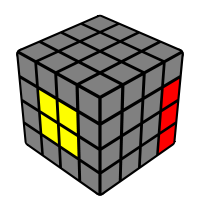  In this step, moves and rotations are generally restricted to the subset <U,l,r,R,L,F,x>. There are a number of approaches to this step. The simplest being pairing/placing three edges and adding the corners. However, this is not very efficient in every case. Parallels can be drawn with the 1x2x3 block from the Roux method. "There are no strict rules, it completely depends on the situation." Experience with Petrus or Roux will come in handy here. As a rough guide, I tend to place whatever pieces I managed to find while solving the first two centres, while searching for more pieces to place after the first few, and continue in this manner. It's quite easy to keep track of multiple pieces once you get used to it, all you have to do is locate the next group while you're putting the current one in. Often, it pays to connect an edge and corner (for example) before connecting it to the block. Now, CFOP/redux users generally omit solving the corners from this step and solve them (along with half an edge pair) during F3L with F2L algs. I feel that this is an inferior approach, because if the block is created in more of a blockbuilding style (instead of simply pairing edges), the corners can usually be solved at the same time as the edges with very few extra moves. The latter approach also allows you to ensure your F3L step is kept free from rotations, as well as permitting shortcuts concerning two halves of an edge pair to be solved at once. |